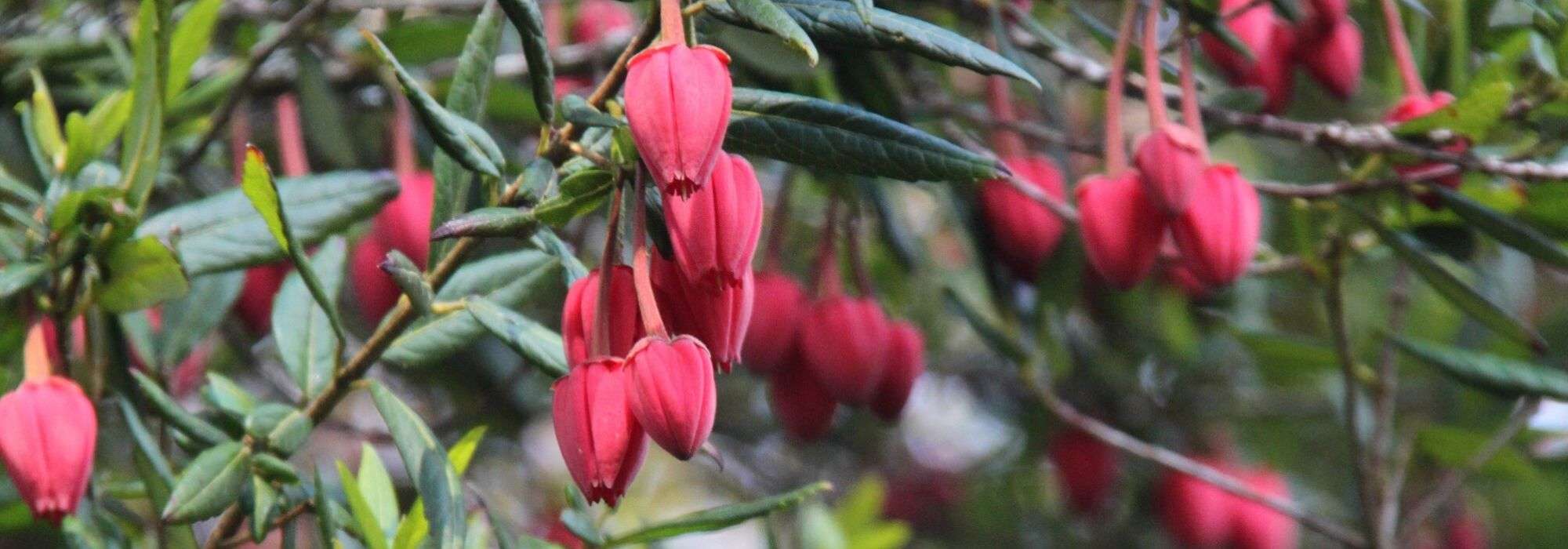
Crinodendron, Lantern tree: planting, pruning, and care
Contents
Crinodendron in a nutshell
- Crinodendron, or Chilean lantern tree, is an evergreen bush 2 to 3 m tall
- It bears curious trailing flowers shaped like lanterns, red or pink, from spring to late summer
- They thrive in a humid and mild environment, sheltered from cool winds and full sun
- These bushes are very unique and not widely spread; they can be grown in pots or in the ground
A word from our expert
The most commonly grown species of Crinodendron is hookerianum, named in honour of Joseph Hooker (1817-1911), an eminent botanist and explorer, particularly of Tierra del Fuego in Chile, as well as the Himalayas. Known as the “Lantern tree” or “Chilean lantern tree,” this species is a very original plant, best suited to mild and humid climates such as those found in Brittany, Normandy, or the Basque Country, and to fresh, acid, humus-bearing soils. This evergreen bush offers fairly dense foliage, with elongated, dark green, glossy leaves adorned with light green young shoots in spring. Red flower buds dot the branches during autumn and winter, blooming only from April-May until September. The five fleshy petals form a sort of pendulous urn at the end of a long peduncle.
The success of this flowering, however, requires that temperatures do not drop below -3°C, although the bush can withstand short frosts between -7 and -10°C.
Expect a maximum growth of 4 m high and 3 m wide in our latitudes. Hooker’s Crinodendron pairs very well with ericaceous plants that enjoy the same cool, humid, and semi-shaded conditions of the Atlantic coast. You can also grow it in a pot placed against a semi-shaded wall facing west or north. Avoid the east, which may scorch the buds and young shoots.
Description and botany
Botanical data
- Latin name Crinodendron
- Family Elaeocarpaceae
- Common name Lantern tree
- Flowering between April and September
- Height between 2 and 3 m
- Exposure partial shade
- Soil type cool, acid humus-bearing, non-calcareous
- Hardiness Medium (-8 to -10 °C)
The genus Crinodendron consists of only four species of evergreen trees or bushes, all native to South America. This genus is, however, a close relative of the genus Elaeocarpus, which includes over 200 species of trees or bushes found in tropical Asia, Australia, and New Zealand. Crinodendrons, like Elaeocarpus, are included in the family Elaeocarpaceae, which is related to the Tiliaceae (lime tree). The name Crinodendron is derived from the Greek words krinon, meaning “beautiful flowers,” and dendron, which means tree.
The species hookerianum (syn. Tricuspidaria lanceolata), the most commonly cultivated, grows in the rainforests of the Chiloé Islands as well as the southern Chilean coast and tolerates frosts of -7 to -10 °C. There is a less spectacular species in terms of flowering but more drought-resistant and vigorous, Crinodendron patagua, native to the hills of Valparaiso further northeast. It features white flowers shaped like small bell-shaped blooms with finely cut petals at the end of summer.
The lantern tree of Chile, capable of reaching 9-10 m in its habitat, only grows to 3-4 m high in cultivation with a spread of 3 m. The evergreen leaves are alternate, quite thick and strongly veined, narrowly elliptical in shape, measuring 7 to 10 cm long and 0.7 to 1.8 cm wide. Their glossy dark green hue and the lighter, downy underside highlight the brilliance of the flowers, even in the bud stage that begins in autumn. The laminae, borne on a short petiole, have a leathery texture with coarsely dentate edges and a light green pubescent underside.
The fusiform, coloured buds, topped with the calyx, about 2 cm long, resemble tulip buds, except that at blooming, only the tip of the corolla slightly separates. The flowers appear solitary or in pairs at the axil of the leaves and sway at the end of long green-purple peduncles measuring 3 to 6 cm long. The numerous stamens and the pistil remain buried inside the pendulous urn, formed by 5 free, fleshy, channelled petals ending in 3 teeth. The calyx, a reddish-purple hue matching the peduncle, forms a small cap with 3 bilobed sepals at the base of the corolla. The lantern tree is remarkable for the duration of its flowering, which can extend from April to September for about 6 weeks, starting on plants at least 5 years old.
The fruits are globular capsules with 3 to 5 valves that release large, rounded seeds that rarely germinate in our climates.
The white wood of Crinodendron patagua is used in carpentry. Its bark is rich in tannic acid.
The main varieties of lantern trees
Popular species
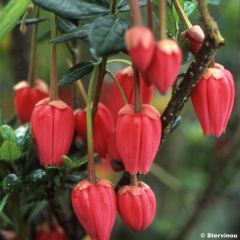
Crinodendron hookerianum
- Flowering time June to October
- Height at maturity 4 m
Rare species
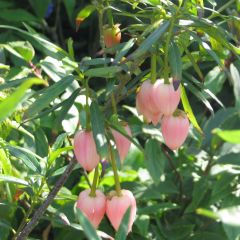
Crinodendron hookerianum Ada Hoffman
- Flowering time May to July
- Height at maturity 4 m
Discover other Crinodendron - Lantern tree
View all →Available in 1 sizes
Available in 1 sizes

Available in 1 sizes
Planting Crinodendron
Where to plant?
This somewhat delicate bush is best reserved for the cool, misty climates of the Breton, Norman, or even Basque coast. It should be protected from full sun, drought, desiccating or cold winds, and even light frosts (-3°C) that may affect flowering and scorch young shoots. However, the bush can withstand brief cold spells down to -8 or -10°C.
Ensure it enjoys a summer filled with good atmospheric humidity, near a stream for example, or at the foot of a partially shaded wall. The peaty soil should be cool but well-drained, especially in winter. It can tolerate temporary immersion and a pH from acidic to neutral (without lime).
Given its size and requirements, it is preferable to plant it at the back of a border or at the foot of a wall facing west. It also thrives well along a stream or in a container on a cool terrace, to be highlighted among Japanese maples or azaleas.
When to plant?
Plant your lantern tree in autumn in October-November if it does not freeze in winter; otherwise, prefer spring.
How to plant?
This plant is easy to cultivate if the soil and climate conditions are met.
To ensure successful planting:
- Soak the pot in a bucket of water to thoroughly moisten it.
- Dig a wide hole three times larger than the root ball, as the roots remain quite superficial.
- Add a few handfuls of sand and gravel to ensure good drainage and a good amount of humus in the form of blonde peat or even compost, depending on your soil’s acidity needs.
- Place the plant in the planting hole.
- Replace the soil and lightly firm it down.
- Mulch to maintain good moisture.
- Water.
Care and pruning of the Lantern tree
- It is advisable to mulch the base of the Crinodendron to prevent the soil from drying out.
- Protect the bush from the cold in winter with fleece and straw or ferns at the base if the plant is young or if your winters are a bit cold.
- The only pests observed are mealybugs, which you can eliminate using black soap mixed with oil and alcohol.
- Pinch the tips of shoots in spring if necessary to thicken the bush.
Multiplication
The simplest multiplication method, which requires some resources, involves propagating Crinodendron hookerianum in June or July-August, as seed germination is difficult.
Propagation by cuttings
- Prepare a deep pot by filling it with a mixture of potting soil and sand.
- Take semi-woody head cuttings about 10 cm long.
- Dip the base of the cuttings in plant hormone before inserting them into a light medium.
- Place them under cover in a mini greenhouse or by wrapping the pot in a clear plastic bag.
- Transplant the young plants as soon as they start to produce green shoots.
- Keep them in a frame in partial shade and repot if necessary into larger pots.
- Flowering usually occurs after about 5 years.
Uses and associations
Trees with lanterns, which prefer protection from cold, cool winds, and sunlight, are well-suited for the back of a border of heather soil alongside camellias, Pieris, rhododendrons, evergreen or deciduous azaleas, and hydrangeas. They can also adorn the base of a wall facing west or be displayed in a large pot on a partially shaded terrace.
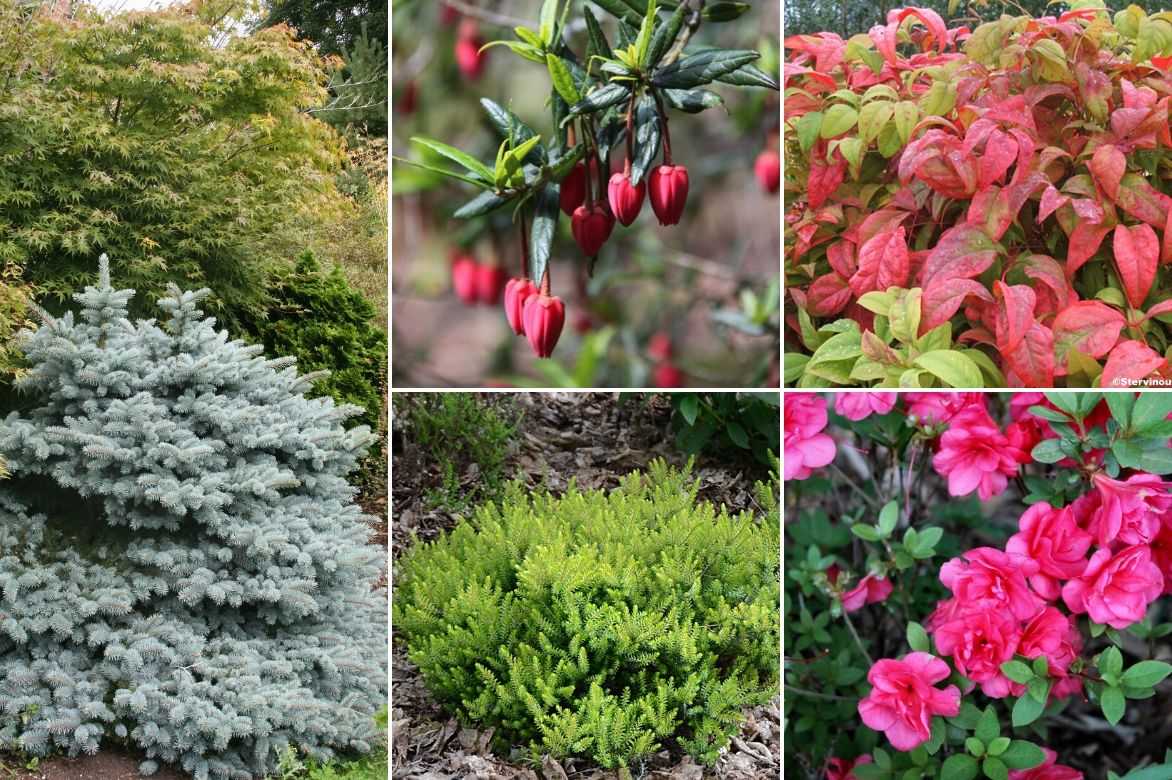
An example of a four-season association: a Japanese Maple and a Picea pungens ‘Glauca Globosa’, a Crinodendron hookerianum, some Nandina domestica ‘Firepower’, Erica ‘Winter Belles Tylou’ (and/or other winter heathers) as groundcover, and a Japanese Azalea ‘Christina’
To complete the curiosity cabinet of a cool, moist Chilean-type garden, Crinodendrons can be paired with shrubs such as Desfontainia spinosa with its bright orange, fusiform bells, the Fire Tree (Embothrium coccineum), Nothofagus (Australian beech with small glossy leaves), and the spectacular Cardiocrinum giganteum, a giant lily with a delightful fragrance, native to the wooded mountains of the Himalayas.
For further reading
Discover our range of Crinodendrons.
- Subscribe!
- Contents
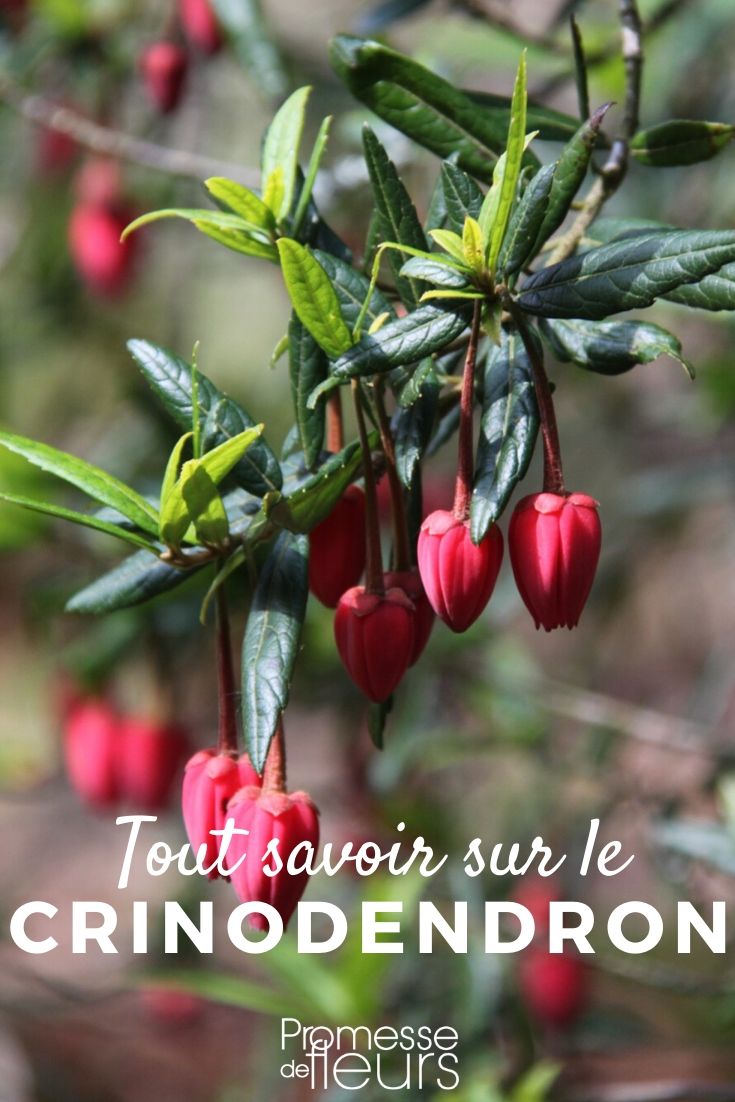































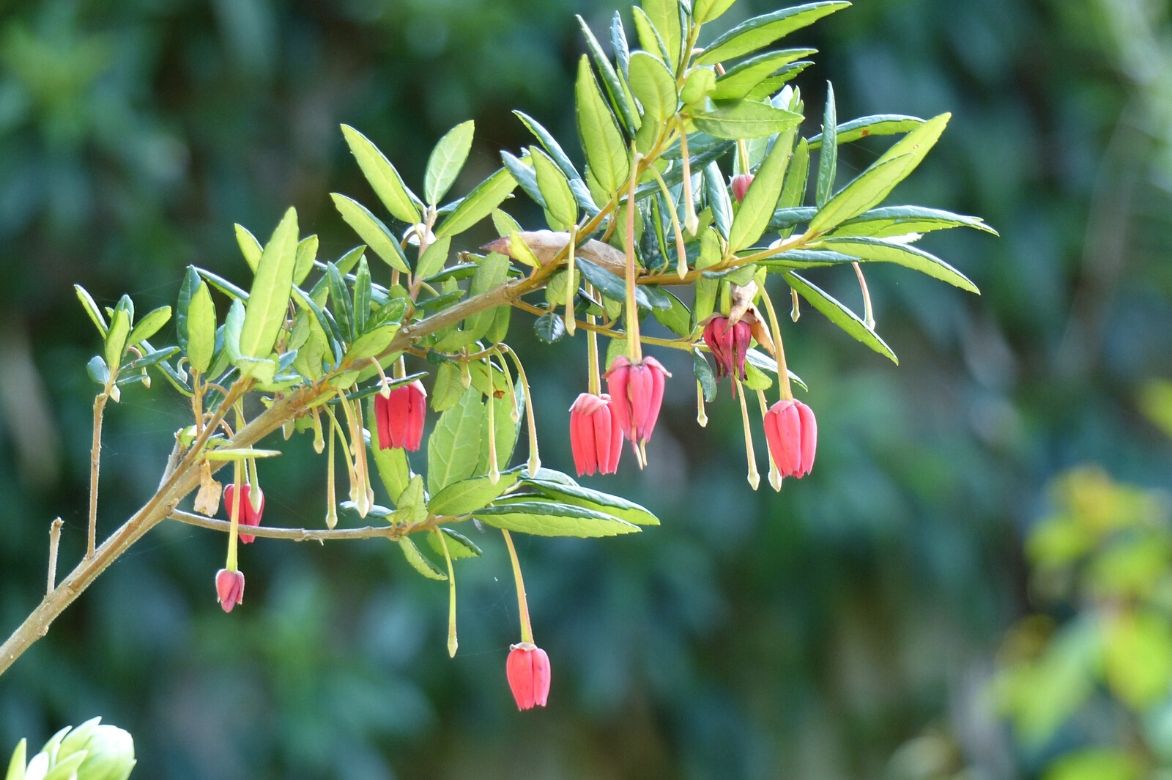
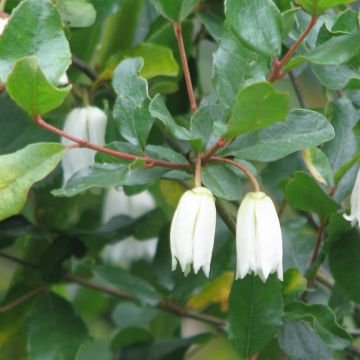

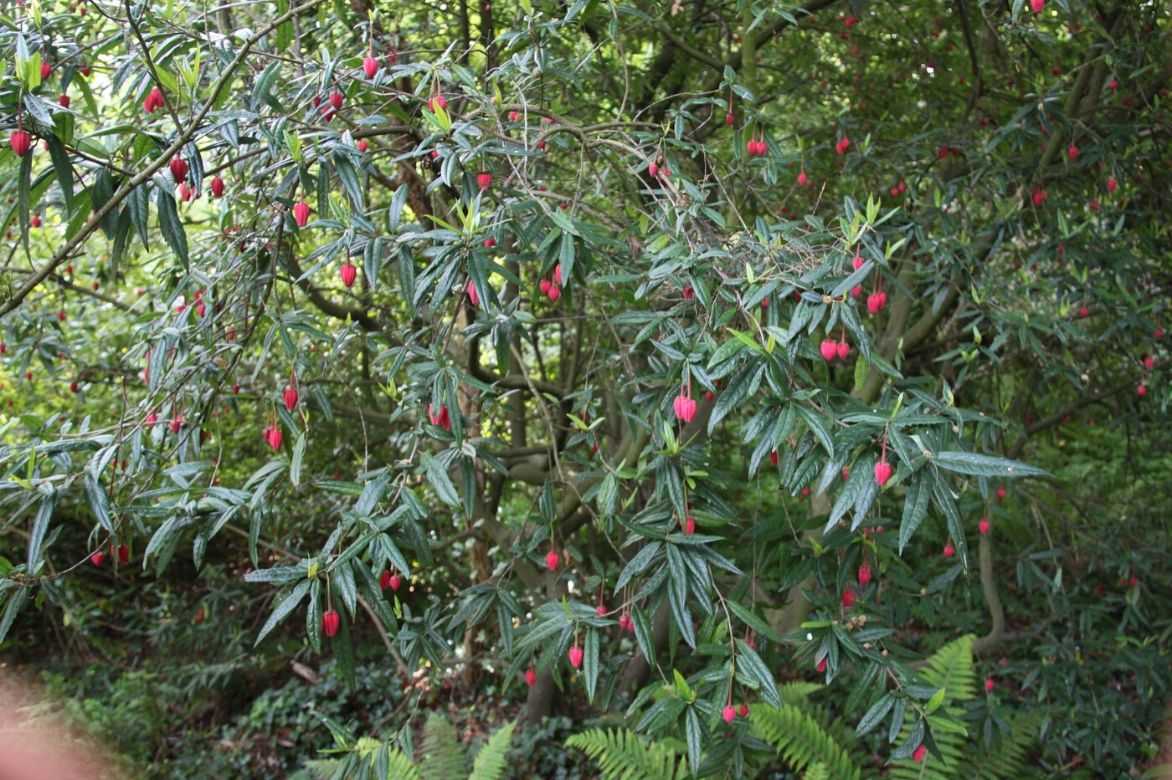
Comments